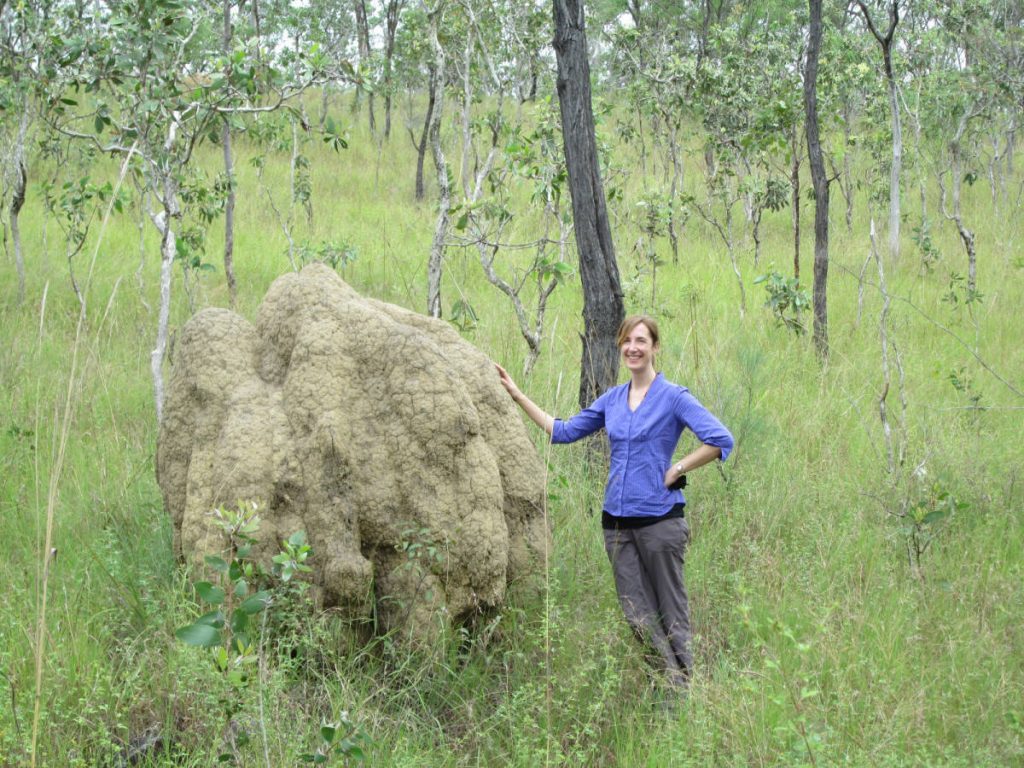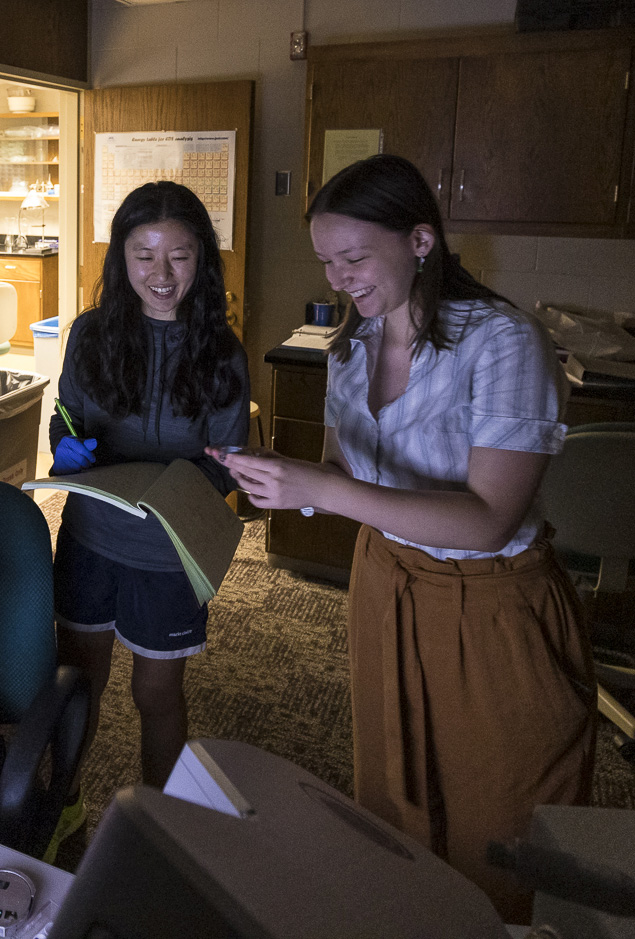
Summer for many Macalester students means time spent digging deeper into research projects with professors. Almost 80 percent of students report doing an internship or research project by the time they graduate. In Professor Boyer’s lab a team of students worked on better understanding New Zealand’s mite harvestmen, tiny arachnids related to daddy long-legs.
Sarah Boyer, Biology

Why is this work important?
Most species on Earth are unknown to science! Especially when it comes to tiny creepy crawlies that live down in soil and leaf litter, scientists estimate that the vast majority of species are unnamed and undescribed. In an era of mass extinction, it is particularly important to understand what is alive on our planet right now. Much of the work in my lab is focused on discovering new species and mapping the diversity of tiny arachnids from New Zealand.
What new things you’ve learned while doing this work?
Over the last couple of years, we have moved to new methods for DNA sequencing – generating data from hundreds of segments of each animal’s genome simultaneously. The lab techniques and data analysis methods that students use in their research in my lab were too expensive and technically challenging to implement just a few years ago, so it’s very exciting to be able to start using “next generation sequencing” in my lab.
What’s a general day look like as you help students complete their work?
After the first few weeks in lab, when everyone gets trained in all of the basic techniques and equipment we use, students take charge of their own direction either independently or in teams. We start each day with a meeting to talk about what everyone’s up to, and I spend time with students to troubleshoot, brainstorm ideas for new directions, or train on new approaches as necessary. This summer we’ve taken a few working days to search for orb weaving spiders for a research project that students in my fall zoology course will take on, and looking for critters in the field is always fun.
What advice would you give to students who would like to find a research experience?
Don’t be afraid to reach out to professors whose work is interesting to you! We love it when students come talk to us about our research, and even if a specific professor isn’t taking on new students in their lab, they may be able to point you toward opportunities on or off campus.
***
Yoonjin Shu
What attracted you to this research/project? Why is this important to you/to the world?
I’ve always had a love for biodiversity and learning as much as I could about different animals. When I was first introduced to mite harvestmen my sophomore year at Mac I thought they sounded fascinating! Why some animals are found in some places but not others is a question I’ve had since I was little, and I wanted to explore these types of questions more while at Mac. By studying these tiny arachnids, we can learn not only about current biogeographic patterns, but more about our Earth’s history and what might have influenced the distributions we see currently. This is important to understand especially as our climate continues to change as it can help us learn how current changes might reflect future distributions.
Typical day
I enjoyed working with my lab mates a lot this summer and it was always nice talking to them in the mornings. After that, we mostly focused on our own individual projects, but as everything is related in the lab we often collaborated with each other. Some days were more like this, but on others, we worked more closely together whether it was taking images of mite harvestmen on the scanning electron microscope (SEM) or doing benchwork together (DNA extraction, running a gel, etc.)
What is your most surprising discovery/learning so far?
It was incredible to see some of the morphological variation these animals have underneath the SEM
Best soundtrack for research?
Chatting with friends
***
Phoebe Fu
What attracted you to this research/project? Why is this important to you/to the world?
I was just really interested in learning more about harvestmen and how new species are discovered in Biology. I really liked learning about biodiversity and wanted to continue it.
What do people get wrong about this subject?
Mite harvestmen are not spiders.
***

Sophia Anderson
Typical day
Mornings are usually filled with molecular protocols of incubations from yesterday’s afternoon preparations. If there are none, then genetic explorations and holistic explorations are done for our big and small questions. This can consist of creating presentations to explore morphology of specimens (ours are mite harvestmen), or maybe creating an updated phylogenetic tree.
What is your most surprising discovery/learning so far?
We discovered a new species of Rakaia from the Otago/Dunedin area of New Zealand!
Name three essential research items
Microscopes, a team, and Qiagen kits
Go-to research snack
Coffee
Best soundtrack for research
The humming of the centrifuge
Curious about other research projects at Macalester? Keep reading. Up next: Dinosaur Eggshells
August 17 2021
Back to top




